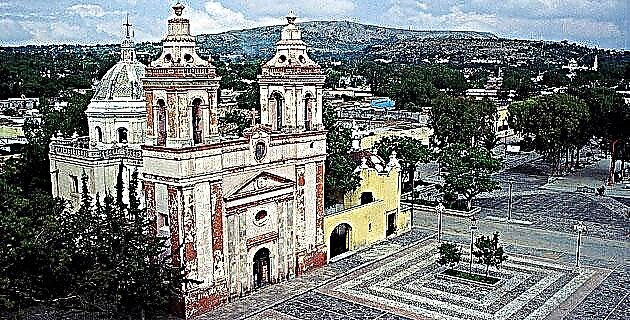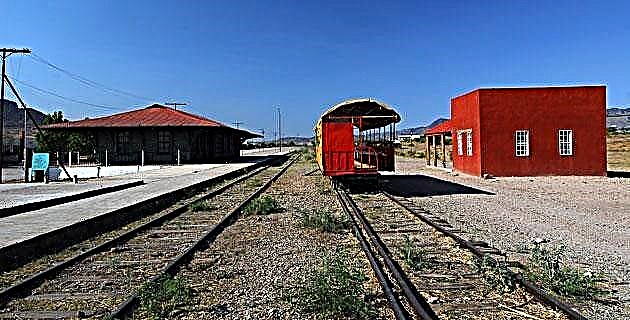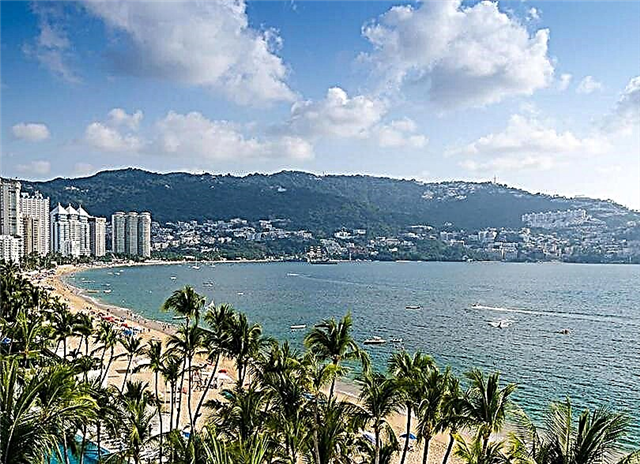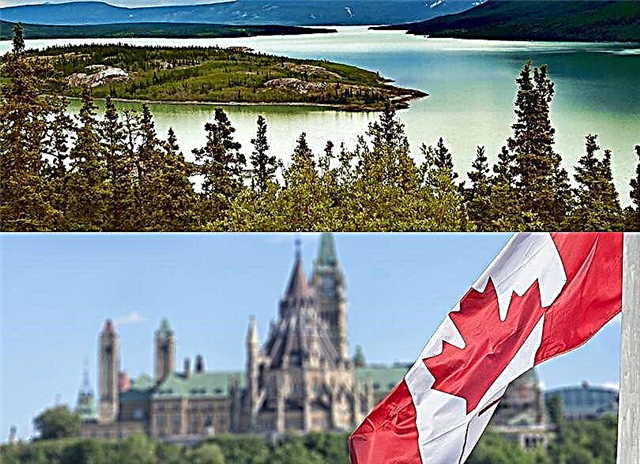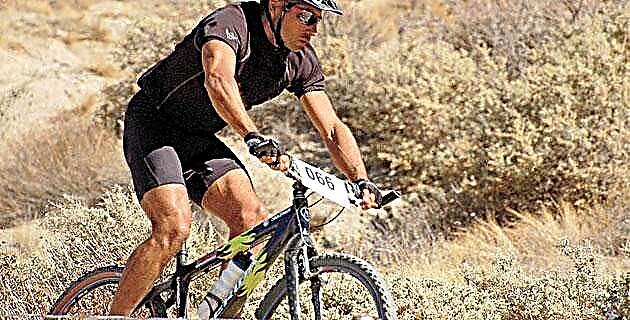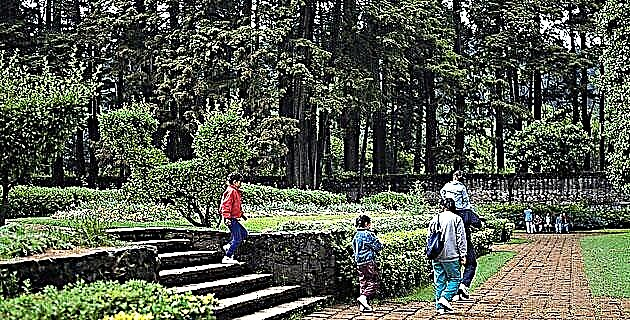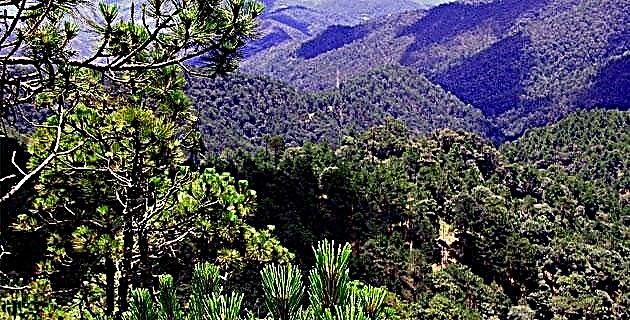
Without haste, a group of young people went deep into the forest. We did not know if it was the solitude, the vegetation, or the animals that came our way, which made us feel ecstatic on this piece of land.
Day 1
We arrived at the town of Ixtlán de Juárez, where we made the last preparations for our expedition and prepared our backpacks. There our first day of hiking officially began. It was when we entered the freshness of the coniferous forests of pines and oaks. After three hours of ascent, we reached our first camp at the top of the Pozuelos hill, the highest point above 3,000 meters that we would reach during the tour. By the way, the good thing about hiring an expedition service is that during the four days we were accompanied by porters from the region, who supported us at all times and the guides showed themselves daily preparing delicious meals. After resting for a while, during the afternoon we ascended to the top of Pozuelos to enjoy a spectacular sunset, where the rugged mountain ranges follow one after another, a thick sea of clouds running between them.
Day 2
During the morning we pick up the camp, have breakfast and start another day of walking along the Camino Real, which took us into the magical cloud forest, where the vegetation begins to be thicker and more abundant, the trees are covered with mosses, lichens , bromeliads and orchids. After three hours, we stopped to have a snack and rest to continue another two hours to the next camp, known as La Encrucijada, where we made popcorn, while our guides prepared a succulent fondue, which we accompanied with red wine. We enjoyed everything like never before, it would be the environment, the forest, the night, or perhaps knowing that we were days away from the closest civilization.
Day 3
By the third day, we were experts at putting up and taking down the tents. After breakfast, our steps took us into a lost world, in the heart of the mesophilic forest. Throughout the day we walk along an edge or slope that marks the natural border between the plains of the Gulf of Mexico and the Pacific Ocean, from where it is possible to see how the thick loaded clouds arrive, with all their force, and leave. fading when passing the other side of the sierra, which is hotter. It is a unique phenomenon.
These clouds are precisely the ones that give rise to the “cloud forest”, scientifically known as the mesophilic forest Oreomunnea mexicana, considered one of the oldest in the world due to its similarity with fossil remains of forests that date back more than 22 million years. . They are the richest in plant species at the national level and are part of the largest cloud forest area in Central and North America (including the Caribbean). Recent studies carried out via satellite reveal that this is one of the best conserved in the world and is the habitat of numerous species, many of them endemic, such is the case of the salamanders of the Plethodontidae family; 13 species of reptiles, 400 species of birds, two of them endemic, and 15 in danger of extinction. As we pass we find colorful butterflies, as this area is considered one of the three with the highest species richness in the national sphere, such as the Pterourus, also endemic to the region. As for mammals, it is home to the deer, wild boar, tapir, spider monkey and five species of felines, including the ocelot, puma and jaguar.
Impressed by so much wealth and after five hours of walking, we arrived at our last camp, located in Laguna Seca, where once again our guides left us impressed with their high mountain culinary skills, delighting us with an excellent spaghetti Bolognese, salad Caesar and slices of chorizo and Argentine-style salchichón, roasted over the campfire.
Day 4
On this day the old Camino Real took us now to the tropical forest, from the cold of the mountain we went to the humid heat, where nature once again surprised us with tree ferns 14 meters high and with one of the largest trees in the world. the Chiapensis, located after the Eucalyptus of Africa and the Sequoia of the United States.
To refresh ourselves, we took a bath in the crystal clear pools of the Soyalapa River (which together with many others make up the Papalopan). Finally, after a couple of hours, we returned to Ixtlán and from there, an hour and a half, we arrived in the city of Oaxaca, where we ended this magnificent journey. A unique place in the world, worth visiting and preserving.
A path with history
This route became, after being the connecting thread between Monte Albán and the peoples of the valleys of Oaxaca with the cultures that inhabited the plains of the Gulf of Mexico, in the royal road used by the Spanish conquerors, who after having founded the Villa Rica de la Veracruz entered Zapotec territory, where they were defeated on three occasions by the fierce warriors. Finally they achieved their mission and the road became the main route and gateway between the Port of Veracruz and the valleys of Oaxaca, where ambition led the conquerors to walk for days with their heavy armor carrying gold and precious treasures from the sacking of Monte Albán and surrounding cities.
Other riches
The Sierra Norte de Oaxaca, also known as Sierra de Ixtlán or Sierra Juárez, is located in the north of the state. The millenary Zapotec culture has inhabited this region since time immemorial, they have cared for and protected its ancestral forests, being today an example for the whole world of conservation and protection of nature. For the people of Ixtlán, the forests and mountains are sacred places, since their own subsistence depends on them. Today, thanks to the efforts of the indigenous Zapotecs, 150,000 hectares of communal lands are protected.
What to bring
It is essential to carry the minimum of equipment and clothing, since it is loaded during the tour. Have a long-sleeved shirt, a T-shirt, light pants, preferably nylon, a Polartec jacket or sweatshirt, walking boots, a raincoat, a poncho, sleeping bag, mat, personal hygiene items, flashlight, pocket knife, water bottle , plate, cup and spoon.
It is very important that you do not do this tour without professional guides, as it is very easy to get lost in the mountains.

